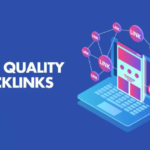How to Fix Broken Links and 404 Errors to Improve SEO
Broken links and 404 errors may seem like minor issues, but they can significantly impact your website’s SEO performance. When users or search engine bots encounter broken links, it leads to a poor user experience, wasted crawl budget, and missed opportunities for indexing and ranking valuable content.
In this blog post, we’ll discuss what broken links and 404 errors are, how they affect SEO, and actionable steps you can take to find and fix them.
What Are Broken Links and 404 Errors?
Broken-Links: Also known as dead links, these are hyperlinks that lead to non-existent or inaccessible web pages.
404 Errors: These occur when a user tries to access a page that doesn’t exist, resulting in a “Page Not Found” message.
Broken links can be internal (within your own website) or external (linking to other websites).
Why Broken-Links Hurt SEO
1. Poor User Experience
Visitors who encounter 404 pages may leave your site in frustration, increasing your bounce rate and reducing trust.
2. Crawl Waste
Search engine bots waste time crawling broken pages instead of indexing valuable content.
3. Lost Link Equity
If a high-authority page links to a broken URL, the SEO value of that link is lost.
4. Negative SEO Signals
Too many broken links can signal to search engines that your site is not well-maintained, which can impact your rankings.
How to Find Broken Links and 404 Errors
1. Use Google Search Console
Check the “Coverage” report for 404 errors.
Monitor crawl errors and affected URLs.
2. Use SEO Audit Tools
Ahrefs Site Audit
Screaming Frog SEO Spider
SEMrush Site Audit
Broken Link Checker (WordPress plugin)
3. Manual Checks
Navigate your site as a user and check for broken links.
Review older blog posts and pages for outdated URLs.
How to Fix Broken Links and 404 Errors
1. Set Up 301 Redirects
If a page has moved, set up a 301 redirect to guide users and bots to the new URL.
Use your CMS or server configuration to implement redirects.
Avoid redirect chains (redirecting to another redirect).
2. Update Internal Links
Fix any internal links pointing to non-existent or outdated pages.
Use your CMS or database to update URLs.
Maintain a spreadsheet of updated links for reference.
3. Replace or Remove Broken External Links
Replace broken outbound links with updated or alternative sources.
If no replacement exists, remove the link altogether.
4. Create Custom 404 Pages
Design a helpful 404 page to keep users engaged and guide them back to relevant content.
Include a site search bar or popular page links.
Keep the design consistent with your website’s branding.
5. Monitor Regularly
Set up automated checks to detect broken links and errors as soon as they appear.
Schedule regular site audits.
Monitor Google Search Console for ongoing issues.
Best Practices to Prevent Future Broken Links
Use relative URLs when linking internally.
Avoid changing URL slugs unless necessary.
Regularly audit your website for outdated or deprecated content.
Ensure external sources are reliable and frequently updated.
Final Thoughts
Broken links and 404 errors are more than just a nuisance—they directly impact your SEO, user experience, and website credibility. By proactively identifying and fixing these issues, you can maintain a healthy website that ranks well and provides value to both users and search engines.
Make broken link maintenance a routine part of your SEO strategy, and enjoy the benefits of a well-optimized and user-friendly site.




